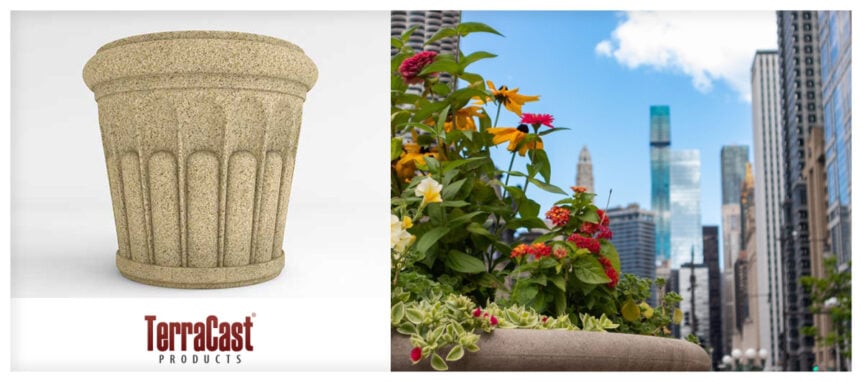Vandalism is an unfortunate reality of urban life, and graffiti is one of the most persistent and costly issues cities face. From transit hubs and pedestrian areas to parks and commercial corridors, maintaining a clean and welcoming public environment can feel like an uphill battle. Yet, the choice of materials in site furnishings can make all the difference—especially when municipalities are looking to stretch every dollar.
In recent years, more cities and urban planners have shifted toward resin-based products as a strategic response to vandalism, particularly graffiti. Durable, low-maintenance, and easy to clean, resin furnishings offer both aesthetic appeal and a practical defense against unwanted tagging and markings.
The High Cost of Graffiti Cleanup
Cleaning graffiti may seem like a relatively simple task, but for municipalities, the costs can add up quickly. Labor hours, pressure washing, chemical solvents, and sometimes complete replacement of affected items all contribute to mounting expenses. These aren’t just budgetary issues—they’re quality-of-life concerns.
Graffiti can give an area the appearance of neglect, which often leads to decreased property values, reduced foot traffic, and a diminished sense of safety among residents and visitors. And while anti-graffiti coatings can be applied to some materials, they often require frequent reapplication and can wear down over time—particularly on porous surfaces like concrete or wood.
Why Resin Makes a Difference
Unlike metal, wood, or concrete, resin offers an inherently non-porous surface that is much more resistant to paint adhesion. When graffiti is applied to a resin product, the markings tend to remain on the surface rather than soaking in. This makes removal significantly easier and faster, usually requiring nothing more than a standard cleaning solution and cloth—or in tougher cases, a gentle solvent that won’t degrade the surface.
Additionally, resin won’t rust, splinter, or crack under stress. Even if a site fixture is repeatedly targeted by vandals, a resin bench, planter, or trash receptacle can typically be cleaned and put back in use without any long-term damage. This helps cities avoid the cycle of constant replacement and instead focus on long-term durability and low upkeep.
Quick Turnaround = Reduced Disruption
One of the key advantages of resin furnishings in the fight against graffiti is how quickly they can be restored to their original condition. Traditional materials may need to be sandblasted, repainted, or even removed for professional treatment. Resin, on the other hand, can often be cleaned by city maintenance crews on the spot, minimizing disruption to the space and allowing it to return to regular use almost immediately.
This rapid cleanup process not only saves time but also supports community goals for safety and pride. The quicker graffiti is removed, the less likely it is to recur—a phenomenon often referred to as the “broken windows” theory. When urban areas are consistently clean and well-maintained, they’re less likely to attract vandalism in the first place.
Long-Term Budget Benefits
While upfront investment in quality resin furnishings may be slightly higher than cheaper alternatives, the long-term cost savings are clear. Reduced need for repainting, replacements, and anti-graffiti coatings leads to lower maintenance budgets and fewer man-hours spent on cleanup. Over time, these savings can be significant—especially for cities managing dozens or even hundreds of fixtures.
TerraCast® resin products, for example, are specifically engineered to support this kind of long-term value. Their commercial-grade resin construction is designed to resist staining, weathering, and vandalism, making them a dependable option for public infrastructure. With a wide selection of site furnishings—from planters and benches to receptacles and light pole bases—cities can create consistent, visually appealing streetscapes that hold up to the challenges of daily use.
Easy Integration into Existing Streetscapes
Another benefit of using resin for site furnishings is how well it integrates into both new and existing urban environments. With a variety of standard and custom colors available, resin products can match the branding of a neighborhood, a business improvement district, or a city’s overall design palette. This not only enhances curb appeal but also allows municipalities to maintain a cohesive look across different areas of the city.
By strategically placing graffiti-resistant furnishings in high-traffic or historically targeted zones, cities can proactively manage vandalism without compromising on style or function.
A Smarter Way to Protect Public Investments
Public spaces are shared resources that require thoughtful design and long-term planning. Graffiti resistance should be part of that conversation—especially in dense urban environments where vandalism can escalate quickly. By choosing materials like resin that naturally deter tagging and are easy to maintain, cities can extend the life of their public assets, reduce cleaning costs, and improve community satisfaction.
To explore resin furnishings designed with durability, style, and graffiti resistance in mind, contact TerraCast® Products here.

